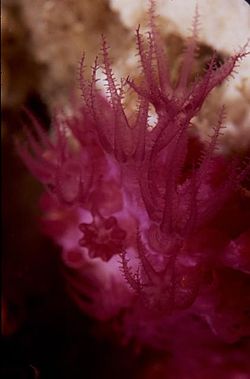| Purple soft coral | |
|---|---|
 | |
| Scientific classification | |
| Kingdom: | Animalia |
| Phylum: | Cnidaria |
| Subphylum: | Anthozoa |
| Class: | Octocorallia |
| Order: | Malacalcyonacea |
| Family: | Alcyoniidae |
| Genus: | Alcyonium |
| Species: | A. fauri |
| Binomial name | |
| Alcyonium fauri Studer, 1910 [1] | |
The purple soft coral (Alcyonium fauri) is a species of colonial soft coral in the family Alcyoniidae. [2]
